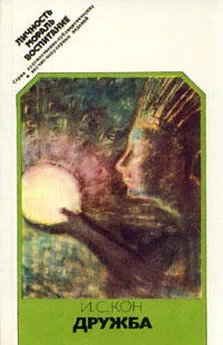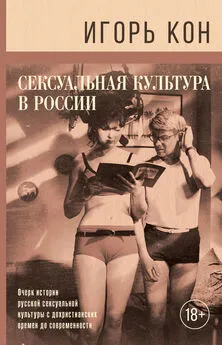Игорь Кон - Мальчик – отец мужчины
- Название:Мальчик – отец мужчины
- Автор:
- Жанр:
- Издательство:Время
- Год:2009
- Город:Москва
- ISBN:978-5-9691-0469-3
- Рейтинг:
- Избранное:Добавить в избранное
-
Отзывы:
-
Ваша оценка:
Игорь Кон - Мальчик – отец мужчины краткое содержание
Новая работа Игоря Кона развивает идеи, изложенные в его бестселлере «Мужчина в меняющемся мире». В конце XX в. человечество неожиданно обнаружило, что самым слабым звеном современного воспитания являются мальчики: они больше болеют, хуже учатся, чаще совершают преступления и рискованные поступки. Какова природа мальчишества как социокультурного явления? От чего зависят присущие или приписываемые мальчикам свойства? Всегда ли они одинаковы? Каково реальное положение мальчика в современной семье, школе и социуме? Каким он видит себя и свое тело? Как формируются и реализуются мальчишеские представления о мужественности? Каково приходится мальчикам, которые не могут или не хотят соответствовать предлагаемому нормативному канону? В каком направлении развивается современная гендерная педагогика? Обобщая данные мировых междисциплинарных исследований, ученый не дает педагогических рецептов, но его книга необходима каждому, кто готов думать над этими вопросами.
Мальчик – отец мужчины - читать онлайн бесплатно ознакомительный отрывок
Интервал:
Закладка:
Школа и педагогическая мысль Средних веков, Возрождения и начала Нового времени / Под ред. В. Г. Безрогова. М., 1991.
Штылева Л. В. Фактор пола в образовании: Гендерный подход и анализ. ПЕР СЭ, 2008.
Щепанская Т. Б. Символика молодежной субкультуры: Опыт этнографического исследования системы. 1986–1989. М.: Наука, 1993.
Щепанская Т. Б. Антропология молодежного активизма // Молодежные движения и субкультуры Санкт-Петербурга / Ред. В. В. Костюшев. СПб.: Ин-т социологии РАН. 1999. С. 262–302.
Щепанская Т. Б. Традиции городских субкультур // Современный городской фольклор / Ред. С. Ю. Неклюдов. М.: РГГУ, 2003а. С. 27–33.
Щепанская Т. Б. Молодежные сообщества // Современный городской фольклор. М.: РГГУ, 20036. С. 34–85.
Эфрос А. Смех без причины? // Литературная газета. 1977. 2 февраля.
Юрищева Т., Чубарова С, Козловская Г., Еремеева В. Новые здоровьесберегающие технологии в образовании и воспитании детей // Развитие личности. 2005. № 2. С. 171–187.
Якубенко Н. К. «Женская тема» на страницах петербургских журналов 70-х годов XIX века //Российские женщины и европейская культура: Материалы V конференции, посвященной теории и истории женского движения / Сост. и отв. ред. Г. А. Тишкин. СПб.: Санкт-Петербургское философское общество, 2001. С. 90–94.
Ярская-Смирнова Е., Карпова Г., Ворона М. «Веселые, непонимающие и бессердечные»? О феномене Питера Пэна // Неприкосновенный запас. 2008. № 6(62). С. 161–177.
AdamsJ. Risk. London: UCL Press, 1995.
Addis M. E., Mahalik J. R. Men, masculinity, and the contexts of help seeking // American Psychologist. 2003. Vol. 58. P. 5–14.
Adeleke F., Afen-Akpaida J., Aluede O., Omoike D. A review of the extent, nature, characteristics and effects of bullying behavior in schools // Journal of Instructional Psychology. 2008. June 1.
Adoption et fosterage / M. Corbier, ed. Paris: De Boccard, 1999.
Ago R. La liberte de choix des jeunes nobles au XVII siecle // Histoire des jeunes en Occident / Sous la dir. de G. Levi et J. -C. Schmitt. P.: Seuil, 1994. T. 1. P. 331–377.
Alberts A., Elkind D., Ginsberg S. The personal fable and risk-taking in early adolescence // Journal of Youth and Adolescence. 2007. Vol. 36. P. 71–76.
Alexander G. M., Hines M. Sex differences in response to children's toys in nonhuman primates (Cercopithecus aethiops sabaeus) // Evolution and Human Behavior. 2002. Vol. 23. P. 467–479.
Allen J., Brown В. В. Adolescents, peers, and motor vehicles: The perfect storm? // American Journal of Preventive Medicine. 2008. Vol. 35. Suppl. 1. Teen Driving and Adolescent Health: New Strategies for Prevention. P. S289-S293. American Association of University Women. Shortchanging girls, shortchanging America: Full data report. Washington, DC: Author, 1991.
Andersson G., Hank K., R0nsen M., Vikat A. Gendering family composition: sex preferences for children and childbearing behavior in the Nordic countries // Demography. 2006. Vol. 43. P. 255–267.
Andersson G., Hank K., Vikat A. Understanding parental gender preferences in advanced societies: Lessons from Sweden and Finland // Demographic Research. 2007. Vol. 17. P. 135–156.
Ando M., Asakura Т., Simons-Morton B. Psychosocial influences on physical, verbal, and indirect bullying among Japanese early adolescents // Journal of Early Adolescence. 2005. Vol. 25. P. 268–297.
Archer J. Sex differences in aggression in real-world setting: A meta-analytic review // Review of General Psychology. 2004. Vol. 8. P. 291–322.
Arndorfer C. L., Stormshak E. A. Same-sex versus other-sex best friendship in early adolescence: Longitudinal Predictors of antisocial behavior throughout adolescence // Journal of Youth and Adolescence. 2008. Vol. 37. P. 1029–1160.
Arnett J. J. Sensation seeking, aggressiveness, and adolescent reckless behavior // Personality and Individual Differences. 1996. Vol. 20. P. 693–702.
Austin E. J., Saklofske D. H., Egan V Personality, well-being and health correlates of trait emotional intelligence // Personality and Individual Differences. 2005. Vol. 38. P. 547–558.
Aukrust V. G. Boys' and girls' conversational participation across four grade levels in Norwegian classrooms: Taking the floor or being given the floor? // Gender and Education. 2008. Vol. 20. P. 237–252.
Bailey A. A., Hurd P. L. Finger length ratio (2D:4D) correlates with physical aggression in men but not in women // Biological Psychology. 2005. Vol. 68. P. 215–222.
Barker E. Т., Galambos N. L. Body dissatisfaction of adolescent girls and boys: Risk and resource factors // Journal of Early Adolescence. 2003. Vol. 23. P. 141–165.
Barry H. 3-d., Bacon M. C, Child I. L. A cross-cultural survey of some sex differences in socialization // Journal of Abnormal and Social Psychology. 1957. Vol. 55. P. 327–332.
Barry H. 3-d., Josephson L., Lauer E., Marshall С Traits inculcated in childhood: Cross-cultural codes // Ethnology. 1976. Vol. 15. P. 83–114.
Barry H. 3-d., Josephson L., Lauer E., Marshall С Agents and techniques for child training: Cross-cultural codes 6 // Ethnology. 1977. Vol. 16. P. 191–230.
Barry H. 3-d., SchlegelA. Early childhood precursors of adolescent initiation ceremonies //Ethos. 1980. Vol. 8. P. 132–145.
Bastian V. A., Burns N. R., Nettelbeck T. Emotional intelligence predicts life skills, but not as well as personality and cognitive abilities // Personality and Individual Differences. 2005. Vol. 39. P. 1135–1145.
Baumeister R. F., Campbell J. D., KruegerJ. I., VohsK. D. Does high self-esteem cause better performance, interpersonal success, happiness, or healthier lifestyles // Psychological Science in the Public Interest. 2003. Vol. 4. P. 1–44.
Baumrind D., Larzelere R. E., Cowan P. A. Ordinary physical punishment: is it harmful? Comment on Gershoff // Psychol. Bull. 2002. Vol. 128. P. 580–589; discussion 602–611.
Beaver K. M., DeLisi M., Wright J. P., Vaughn M. G. Gene-environment interplay and delinquent involvement: Evidence of direct, indirect, and interactive effects // Journal of Adolescent Research. 2009. Vol. 24. P. 147–168.
Begg D. J., Langley J. D., Moffitt Т., Marshall S. W. Sport and delinquency: an examination of the deterrence hypothesis in a longitudinal study // Br. J. Sports Med. 1996. Vol. 30. P. 335–341.
Benenson J. E., Apostoleris N. H., Parnass J. Age and sex differences in dyadic and group interaction // Developmental Psychology. 1997. Vol. 33. P. 538–543.
Bessant J. Hard wired for risk: neurological science, 'the adolescent brain' and developmental theory // Journal of Youth Studies. 2008. Vol. 11. P. 347–360.
Beyers J. M., Loeber R. Untangling developmental relations between depressed mood and delinquency in male adolescents // Journal of Abnormal Child Psychology. 2003. Vol. 31. P. 247–266.
Blackwell L. S., Trzesniewski K. H., Dweck С. S. Implicit theories of intelligence predict achievement across an adolescent transition: A longitudinal study and an intervention // Child Development. 2007. Vol. 78. P. 246–263.
Blakemore J. E. O., Centers R. E. Characteristics of boys' and girls' toys // Sex Roles. 2005. Vol. 53. P. 619–633.
Bond R., Smith P. B. Culture and conformity: A meta-analysis of studies using Asch's (1952b, 1956) line judgment task // Psychological Bulletin. 1996. Vol. 119. P. 111–137.
Booth M. Z., Sheehan H. C. Perceptions of people and place: Young adolescents' interpretation of their schools in the United States and the United Kingdom // Journal of Adolescent Research. 2008. Vol. 23. P. 722–744.
Bosworth K., Espelage D. L., Simon T. R. Short-term stability and prospective correlates of bullying in middle-school students: An examination of potential demographic, psychosocial, and environmental influences // Violence and Victims. 2001. Vol. 16. p. 411–426.
Boyd K. Manliness and the Boys' Story Paper in Britain: A Cultural History, 1855–1940 // Studies in Gender History Series. London: Palgrave Macmillan, 2003.
Boys Historical Clothing (BHC) http://histclo.com/index2. html.
Breivik G. The quest for excitement and the safe society // Philosophy, risk and adventure sports / M. McNamee, ed. London: Routledge, 2007. P. 10–24.
BrodyL. E., BarnettL. В., Mills C. J. Gender differences among talented adolescents: Research studies by SMPY and CTY at the Johns Hopkins University // Competence and responsibility: Proceedings of the Third European Conference of the European Council for High Ability / K. A. Heller, E. A. Hany (Eds.). Gottingen, Germany: Hogrefe, 1994. P. 204–210.671
Broidy L. M., Nagin D. S., Tremblay R. E. et al. Developmental trajectories of childhood disruptive behaviors and adolescent delinquency: A six-site, cross-national study // Developmental Psychology. 2003. Vol. 39. P. 222–245.
Broude G. Protest masculinity: A further look at the causes and the concept // Ethos. 1990. Vol. 18. P. 103–122.
Brown S. A., McGue M., Maggs J. et al. A Developmental Perspective on alcohol and youths 16 to 20 years of age // Pediatrics. 2008. Vol. 121. Supplement. April. P. S290-S310.
Bugental D. D., Grusec J. E. Socialization processes // Handbook of Child Psychology. 6-th ed. Vol. 3. Social, Emotional and Personality Development / Volume ed. N. Eisenberg. NY: Wiley, 2006. P. 366–428.
Bukowski W. M., Sippola L. K. Newcomb A. F. Variations in patterns of attraction to same– and other-sex peers during early adolescence // Developmental Psychology. 2000. Vol. 36. P. 147–154.
Byrnes J. P., Miller D. C, Schafer W. D. Gender differences in risk taking: A meta-analysis // Psychological Bulletin. 1999. Vol. 125. P. 367–383.
Calvete E., Cardenoso O. Gender differences in cognitive vulnerability to depression and behavior problems in adolescents // Journal of Abnormal Child Psychology. 2005. Vol. 33. P. 179–192.
Carlyle K. E., Steinman K. J. Demographic differences in the prevalence, co-occurrence, and correlates of adolescent bullying at school // Journal of School Health. 2007. Vol. 77. P. 623–629.
Cassell J., Jenkins H. From Barbie to Mortal Combat: Gender and Computer Games. Cambridge, MA: MIT Press, 1998.
Chandos J. Boys Together: English Public Schools 1800–1864. Yale Univ. Press, 1984.
Читать дальшеИнтервал:
Закладка:










